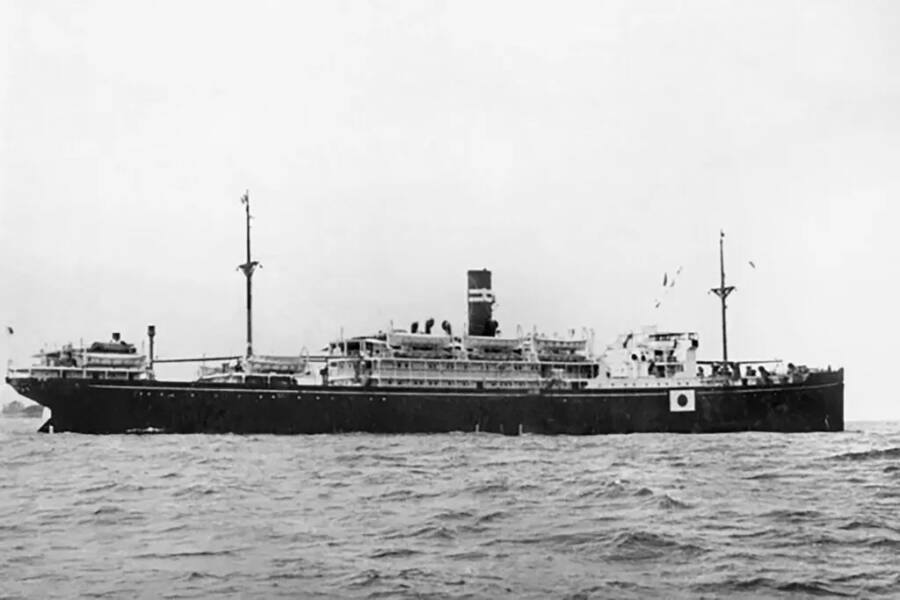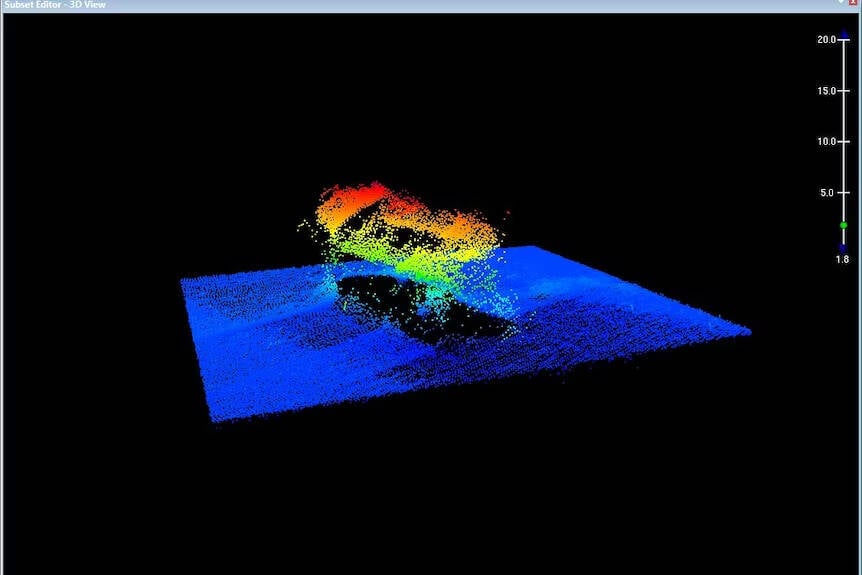On July 1, 1942, a U.S. submarine torpedoed the SS Montevideo Maru, causing it to sink over 13,000 feet and unwittingly killing over 1,000 Allied prisoners of war onboard.

Australian War MemorialSS Montevideo Maru, the doomed Japanese warship that carried 1,000 Allied prisoners through the South China Sea before the U.S. Navy torpedoed it in 1942.
A Dutch exploration crew has just discovered the sunken remains of the SS Montevideo Maru, a Japanese warship that transported roughly 1,000 Allied prisoners of war — mostly Australians — through the South China Sea before the U.S. Navy torpedoed it in 1942.
The find ends an 81-year-long search for the sunken ship and provides closure to the families whose loved ones died in one of Australia’s worst maritime disasters.
“When we first saw the images coming up of the ship no-one had seen for 80 years, since that terrible night, it was pretty emotional stuff,” John Mullens of Silentworld Foundation, a non-profit that helped lead the mission, told the ABC. “We had two people on board who had family members who were lost, so while on the one side there were cheers, on the other there were a few tears. It was very emotional.”
The history of the SS Montevideo Maru begins in Nagasaki, Japan in 1926, when the ship was launched. Initially, it was used to transport goods and passengers between Japan and South America, but that changed once the Second World War broke out.
During the war, the SS Montevideo Maru aided in a number of transport missions, most notably transporting captured Allied prisoners of war and civilians.
In the days leading up to its demise, the SS Montevideo Maru was doing precisely that. In late June, the ship sailed from Rabaul, Papua New Guinea — then controlled by Australia — with the goal of reaching Japanese-controlled Hainan Island to drop off prisoners, soldiers, and goods.
On this voyage, the ship had over 1,000 prisoners, 979 of whom were Australian. In total, civilians from 14 countries were present at the time of the ship’s demise.
On July 1, 1942, a U.S. submarine called the Sturgeon stalked the boat throughout the night and fired four torpedoes at it. Unfortunately, the SS Montevideo Maru did not have markings designating it as a prisoner transport ship.
Fatefully, the torpedoes hit their target, and the SS Montevideo Maru sank off the coast of the Philippine island of Luzon in roughly 11 minutes.
The Japanese crew abandoned the ship, but all of their lifeboats eventually capsized. Only 17 of the 88 guards and crew are believed to have survived the attack, but all later had to march through the Philippine jungle to get to safety.
None of the Allied prisoners survived the sinking.
The sinking of the SS Montevideo Maru devasted the Australian public. Many families only received confirmation that their loved ones had drowned in the attack years later, including the family of radiologist Arthur Parry, who worked as a doctor in Rubaul when Japanese forces invaded.

Cathy Parry-McLennanA telegram to the Parry family informing them of Arthur Parry’s death on the SS Montevideo Maru.
The sheer devastation of the event and the lack of answers about the SS Montevideo Maru’s final resting place drove the Dutch Geo-data company Fugro to start pursuing the ship decades after the disaster.
Fugro spent five years developing a plan to locate the wreck. Working alongside deep sea survey specialists, Silentworld Foundation, and Australia’s armed forces, Fugro began their search in the area they deemed most probable. After only 12 days, their autonomous underwater vehicle found the wreck off the coast of the Philippines’ largest island.
Today, the wreck lies over 4,000 meters, or 13,000 feet, underwater — a depth greater than that of the Titanic.

SilentworldThe exploration team scanned the ocean floor for anomalies, eventually finding the SS Montevideo Maru off the coast of the Philippines.
The Australian public was quick to celebrate this find.
“This brings to an end one of the most tragic chapters in Australia’s maritime history,” Richard Marles, Australia’s deputy prime minister, stated in a video posted to his Twitter.
According to the New York Times, Australian Prime Minister Anthony Albanese stated that he hoped the discovery would bring “a measure of comfort to loved ones who have kept a long vigil.”
“The extraordinary effort behind this discovery speaks for the enduring truth of Australia’s solemn national promise to always remember and honor those who served our country,” Prime Minister Albanese continued.
Currently, the ship’s wreck will be left undisturbed, and there are no plans to return the bodies of the deceased to their families. But many families feel a sense of peace and closure nonetheless.
“Finding the site of Australia’s most devastating loss at sea will help heal Australia’s collective memory for generations,” Australian War Memorial Chair Kim Beazley, whose uncle lost his life in the tragedy, told the ABC. “This has solved a Second World War mystery and my family’s history.”
“Families waited years for news of their missing loved ones, before learning of the tragic outcome of the sinking,” Mullens told Associated Press. “Some never fully came to accept that their loved ones were among the victims. Today, by finding the vessel, we hope to bring closure to the many families devastated by this terrible disaster.”
After reading about the sinking of the SS Montevideo Maru, explore the sinking of the SS Andrea Doria near Nantucket that led to one of the largest civilian rescue missions at sea. Then, look at 33 rare photos of the Titanic taken just before and after the disaster.





